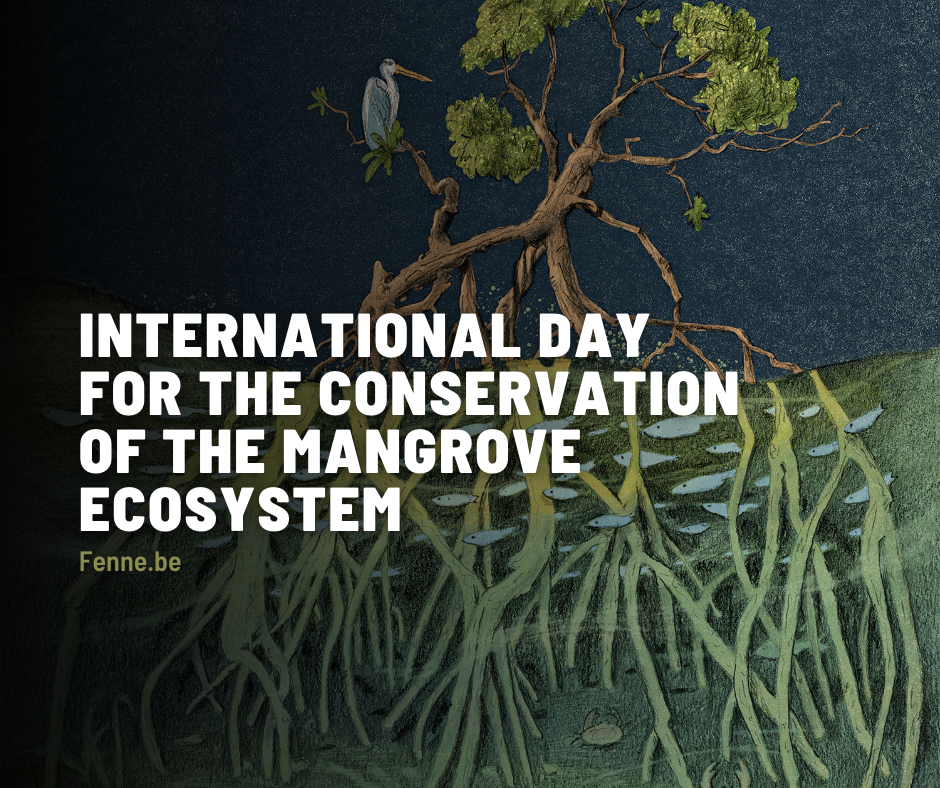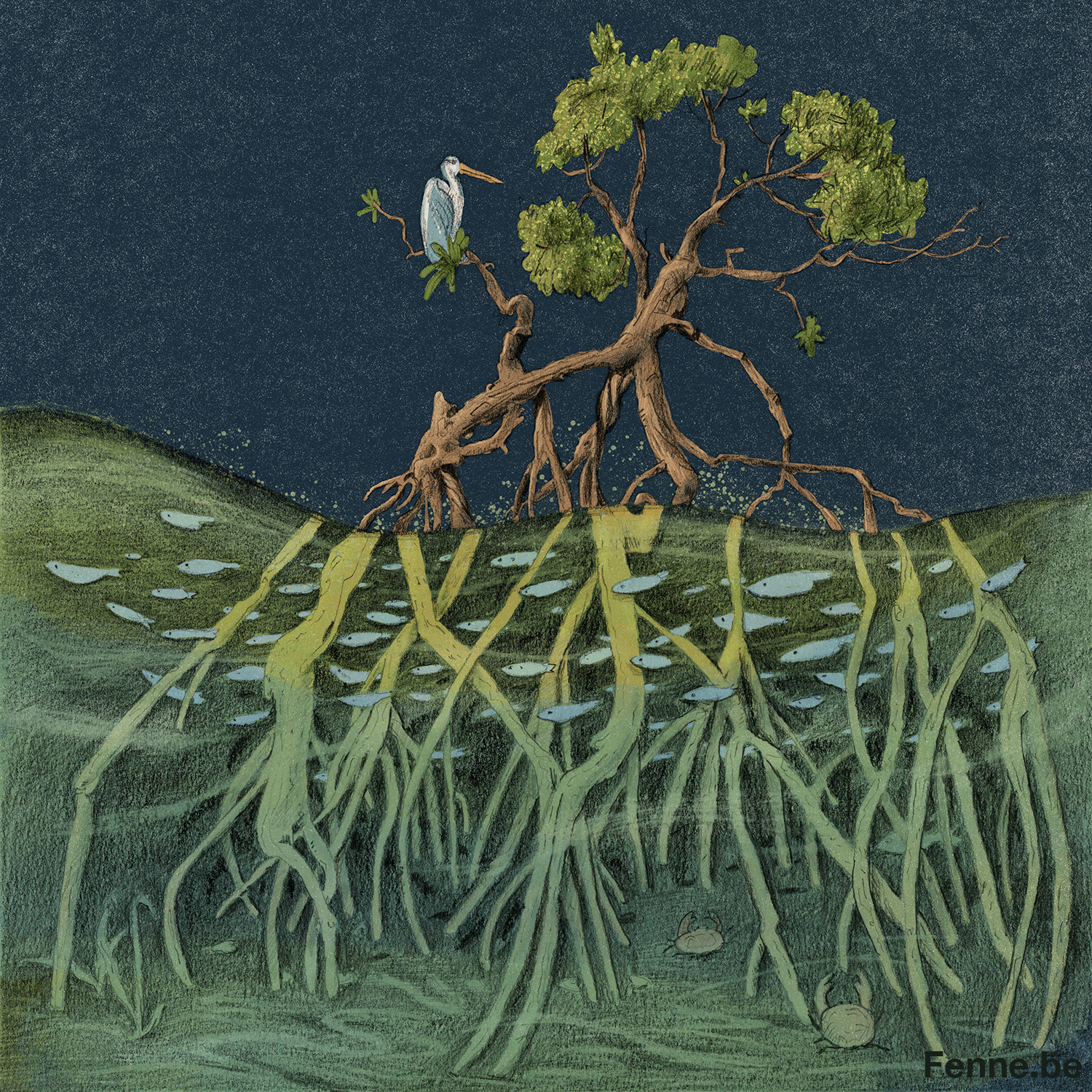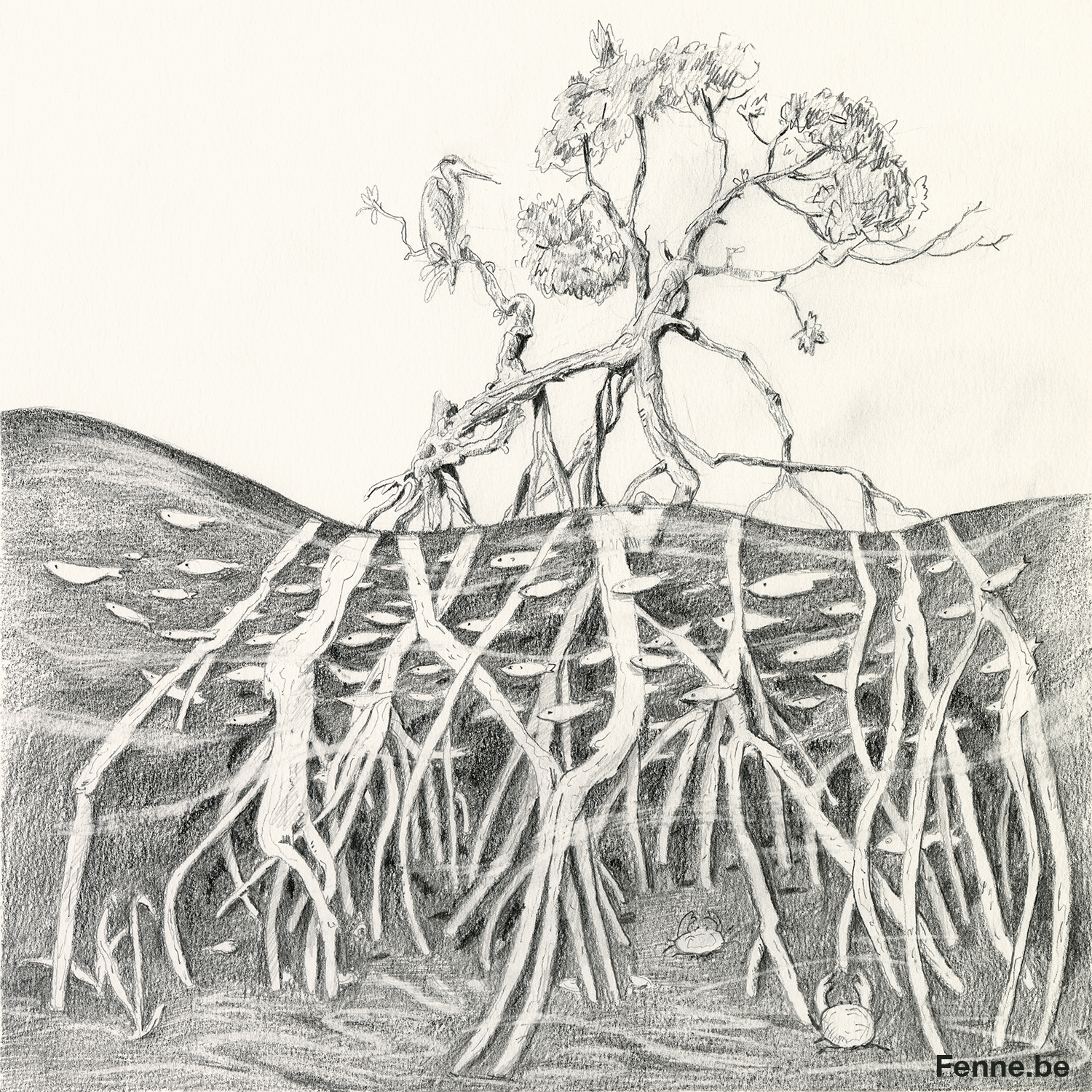International Day for the Conservation of the Mangrove Ecosystem


“Mangroves are rare, spectacular, and prolific ecosystems on the boundary between land and sea. These extraordinary ecosystems contribute to the well-being, food security, and protection of coastal communities worldwide. They support a rich biodiversity and provide a valuable nursery habitat for fish and crustaceans. Mangroves also act as a form of natural coastal defense against storm surges, tsunamis, rising sea levels, and erosion. Their soils are highly effective carbon sinks, sequestering vast amounts of carbon.
Yet mangroves are disappearing three to five times faster than overall global forest losses, with serious ecological and socio-economic impacts. Current estimates indicate that mangrove coverage has been divided by two in the past 40 years.”
Source: Unesco
Some Mangrove facts:
– A patch of mangroves could absorb as much as 10 times the carbon of a similarly sized patch of terrestrial forest.
– Healthy mangrove forests provide shelter for coral species at risk of extinction from coral bleaching.
– Mangroves are cut down to make room for fish/crab/shellfish ponds (that produce a lot of waste and are unusable after a few years), and ocean views.
– Once they are gone, the mangroves can’t be replanted easily. The land erodes and currents reshape the coastline, making it difficult or impossible for mangroves to grow back.
– There are at least 70 different species of shrubs or trees that grow in saline or brackish water. Each type is uniquely suited to its ecological niche, and the wrong kind in the wrong place won’t survive.
– Mangroves can grow for about 100 years.
– 500m of mangrove reduces wave height by 50-99%
